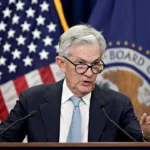오늘 PU Xtrader 챌린지에 참여하세요
시뮬레이션 자본으로 거래하고 우리의 트레이더 평가를 통과한 후 실제 이익을 얻으십시오.
오늘 PU Xtrader 챌린지에 참여하세요
시뮬레이션 자본으로 거래하고 우리의 트레이더 평가를 통과한 후 실제 이익을 얻으십시오.
On Wednesday, the Bank of Japan released a summary of opinions from its December meeting. The meeting, originally held on 20 December, saw the BoJ increase its 10-year benchmark yield ceiling in a surprise move that boosted the yen over 3% by investors betting on a Hawkish turn by the BoJ.
However, Wednesday’s summary revealed that the yield cap widening was “not intended to change the direction of monetary easing”, but to keep stimulus sustainable – echoing Governor Haruhiko Kuroda’s statement that it was “definitely not a step toward an exit”.
Adding to the BoJ’s dovish outlook was another round of unscheduled bond-buying, announced on Thursday morning, where it offered to buy unlimited amounts of 2- and 5-year notes. The yen sunk as much as 0.7% against the dollar.
2022 was not a good year for the Japanese yen, sparked largely by a widening policy shift between the ultra-easy Bank of Japan and an increasingly hawkish Federal Reserve.
Post-Market
2023, however, is when many investors are expecting an about-turn for the yen. A dovish turn from the Fed as it tries to steer a soft landing, coupled with a possible hawkish turn from the BoJ, might close the monetary policy gap. Dankse bank believes yield trends to be crucial, giving a 12-month forecast for USDJPY at 128.
Meanwhile, Hachidai Ueda, senior investment specialist of fixed income at abrdn expects yen to strengthen to 130 as the Fed turns dovish “in a quick way” next year.
A few key points to note: Japan’s inflation readings have started to ramp, with the question being how long it can keep up with its ultra-loose monetary policy as consumer prices hit 40-year highs. Secondly, BoJ governer Haruhiko Kuroda’s term is due to end in April 2023 – will a change of guard also herald a new outlook for the central bank?
Japan is the world’s third-largest economy, and a stronger yen would have far-reaching effects, chiefly bringing large amounts of capital back to japan, while impacting the profits of the nation’s exports. Demand for the carry trade using the yen will also sink.
Investors are now advised to look out for December’s Nonfarm Payrolls, which will be released on 6 January 2023, at 15:30 (GMT+2) and is forecast to be at 200K, down from November’s 263K. The NFP is one of the key labour statistics for the U.S, and its outcome will play a part in determining further Fed policy.
As a friendly reminder, do keep an eye on market changes, control your positions, and manage your risk well.

Trade forex, indices, cryptocurrencies, and more at industry-low spreads and lightning-fast execution.

8 December 2023, 01:37 Economists Anticipate The Fed To Keep Rates Steady In December

4 December 2023, 03:20 Nonfarm Payrolls Forecasted At 175K Increase

24 November 2023, 02:43 Anticipation Of RBNZ Holding High Rates

새로운 등록 불가능
현재 새로운 등록을 받고 있지 않습니다.
새로운 가입은 사용할 수 없지만, 기존 사용자는 평소와 같이 도전과 거래 활동을 계속할 수 있습니다.